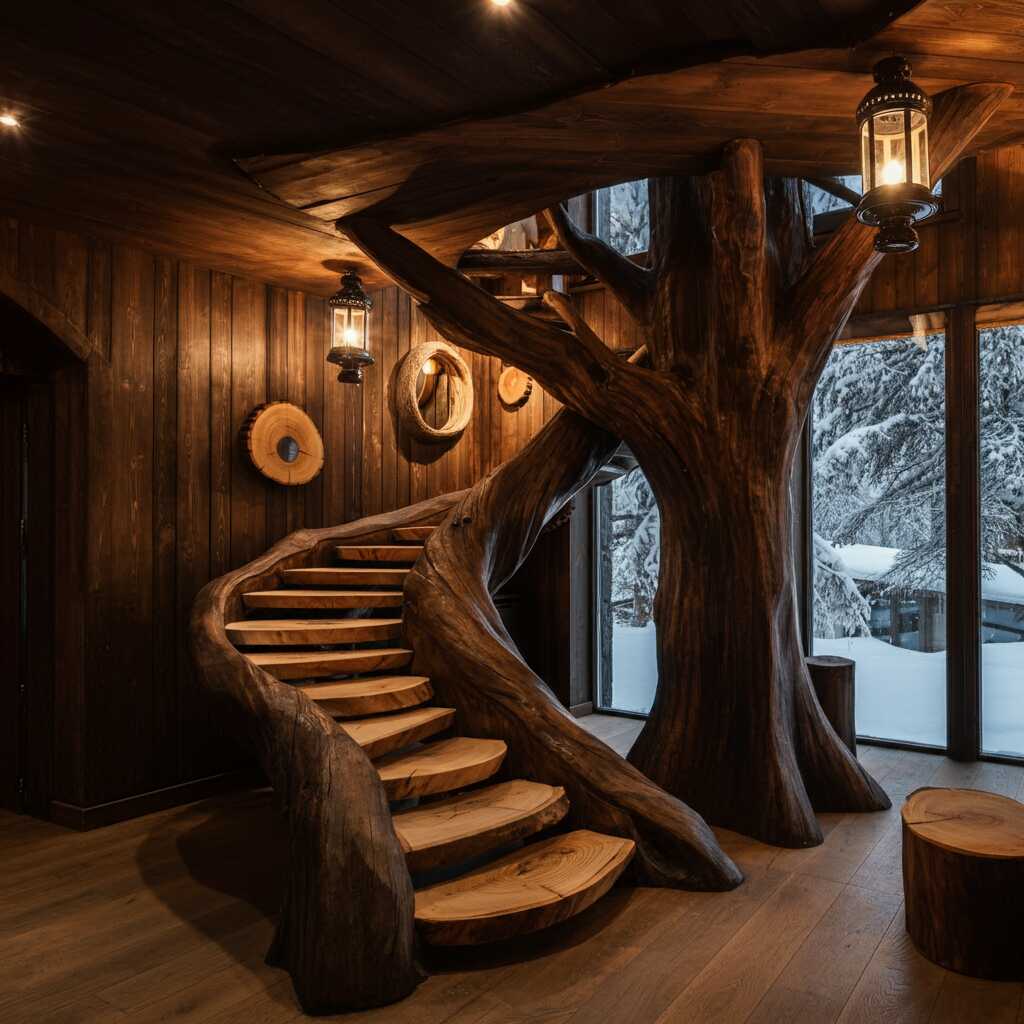In today’s world, where living spaces are shrinking and the need for multifunctionality is growing, maximizing space has become a top priority for many households. A wooden bunk bed stands as an ingenious solution to this challenge, offering not only a practical way to accommodate multiple sleepers in a small area but also adding a touch of warmth and natural beauty to any room. Whether you’re designing a cozy kids’ bedroom, a guest room, or even a compact studio apartment, a wooden bunk bed can be a game-changer when it comes to optimizing your available square footage. This article delves into how you can make the most of this versatile piece of furniture, exploring creative ideas and actionable tips to transform your space while ensuring comfort, functionality, and style.
The Versatility of a Wooden Bunk Bed
A Timeless Design for Every Room
A wooden bunk bed is more than just a functional piece of furniture; it is a design element that blends seamlessly with various interior styles. From rustic cabins to modern minimalist apartments, the natural texture and warmth of wood bring a sense of harmony and balance to any space. Unlike metal or plastic alternatives, wooden bunk beds exude a timeless charm that can adapt to changing trends and personal preferences.
The versatility of a wooden bunk bed extends beyond its aesthetic appeal. It serves as a blank canvas for customization, allowing you to tailor its use based on your specific needs. For instance, in a child’s room, it can double as a play area or study nook. In a guest room, it can provide sleeping arrangements for multiple visitors without overwhelming the space. Its adaptability makes it an ideal choice for homeowners looking to maximize their living areas creatively.
Beyond Sleeping: Multifunctional Uses
While the primary purpose of a wooden bunk bed is to provide sleeping space, its potential goes far beyond that. With thoughtful planning, you can incorporate additional functions that enhance the utility of your room. For example, the under-bed area can be transformed into a storage zone, workspace, or even a cozy reading corner. Loft-style designs can free up floor space, giving you the flexibility to arrange other furniture pieces like desks, dressers, or seating areas beneath the bed.
Moreover, bunk beds can foster social interaction in shared spaces. Siblings sharing a room can enjoy a sense of camaraderie by having their own designated “territory” within the same structure. Similarly, friends or family members staying over can appreciate the convenience and privacy offered by separate sleeping levels. By embracing the multifunctional nature of a wooden bunk bed, you can unlock new possibilities for your home layout.
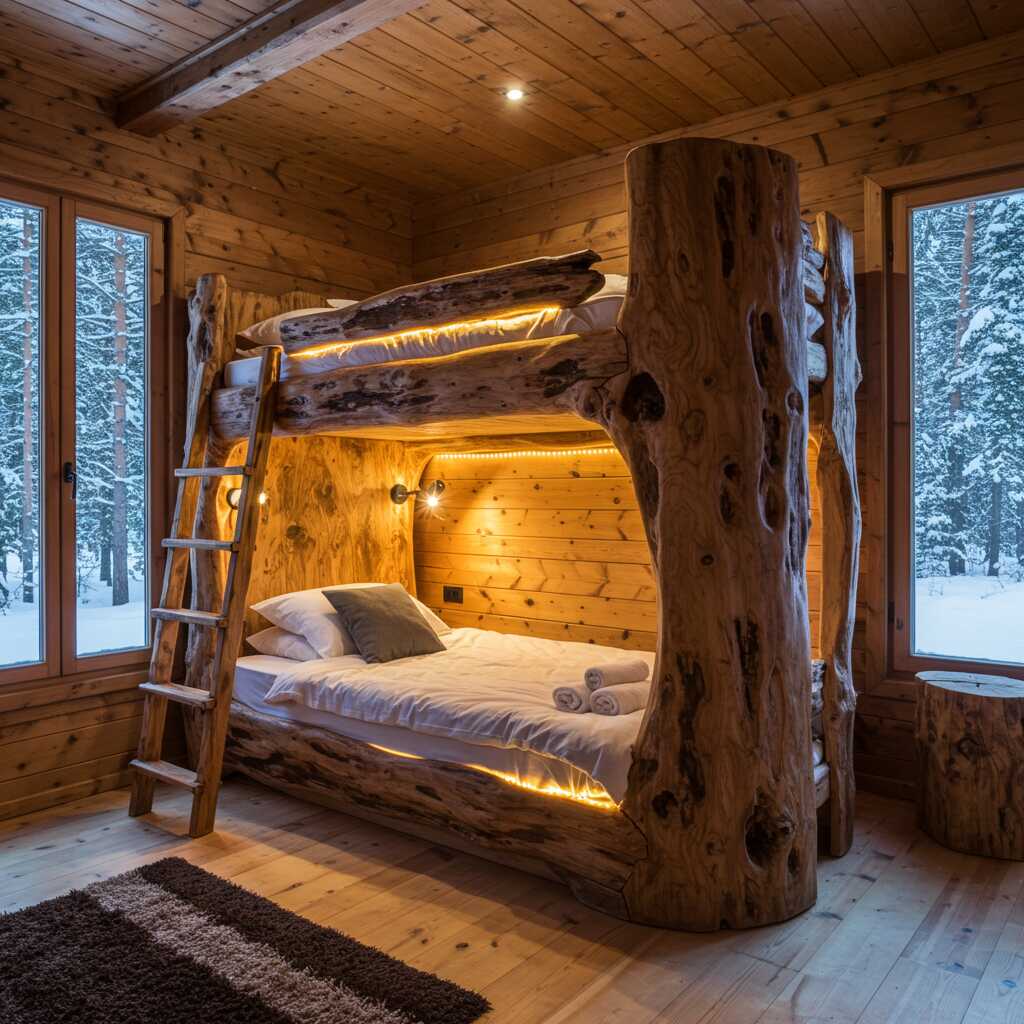
Creative Ways to Optimize Space Around a Wooden Bunk Bed
Vertical Storage Solutions
One of the most effective ways to maximize space with a wooden bunk bed is to take advantage of vertical storage. By incorporating shelves, cubbies, or hanging organizers around the bed frame, you can keep essentials within arm’s reach while minimizing clutter on the floor. For children’s rooms, wall-mounted shelves above or beside the bunk bed can hold books, toys, and decorative items, creating a personalized and organized environment.
If your wooden bunk bed features built-in ladders or guardrails, consider adding hooks or baskets to these elements for additional storage. These small additions can hold everyday items like backpacks, hats, or blankets, ensuring everything has its place. In smaller rooms, vertical storage not only optimizes space but also draws the eye upward, making the room feel larger and more open.
Under-Bed Transformations
The area beneath a wooden bunk bed is often overlooked, yet it holds immense potential for creative transformations. Depending on the height of the bed frame, this space can be utilized in several ways:
- Storage Drawers: Install drawers or bins underneath the lower bunk to store seasonal clothing, bedding, or toys. This keeps frequently used items accessible without taking up valuable closet space.
- Play Area for Kids: For younger children, the under-bed space can become a magical hideaway—a fort, castle, or spaceship—complete with soft cushions and fairy lights.
- Workstation or Study Nook: If your wooden bunk bed is designed with ample clearance, you can place a desk or table beneath the upper bunk. This setup is perfect for students who need a quiet spot to focus on homework or projects.
- Seating Area: Add a couple of bean bags or a small loveseat to create a cozy seating area for relaxation or casual conversations.
By customizing the under-bed area to suit your lifestyle, you can significantly enhance the functionality of your room.
Dual-Purpose Furniture Pairings
To further optimize space, pair your wooden bunk bed with dual-purpose furniture pieces that complement its design. For instance, opt for a bedside table that doubles as a stool or a chest at the foot of the bed that serves as both storage and seating. Ottomans with hidden compartments are another excellent choice, providing extra storage without sacrificing aesthetics.
In shared bedrooms, consider using matching furniture sets that align with the style of the wooden bunk bed. This creates a cohesive look and ensures every piece contributes to the overall efficiency of the space. By carefully selecting complementary furniture, you can maintain a streamlined appearance while maximizing usability.
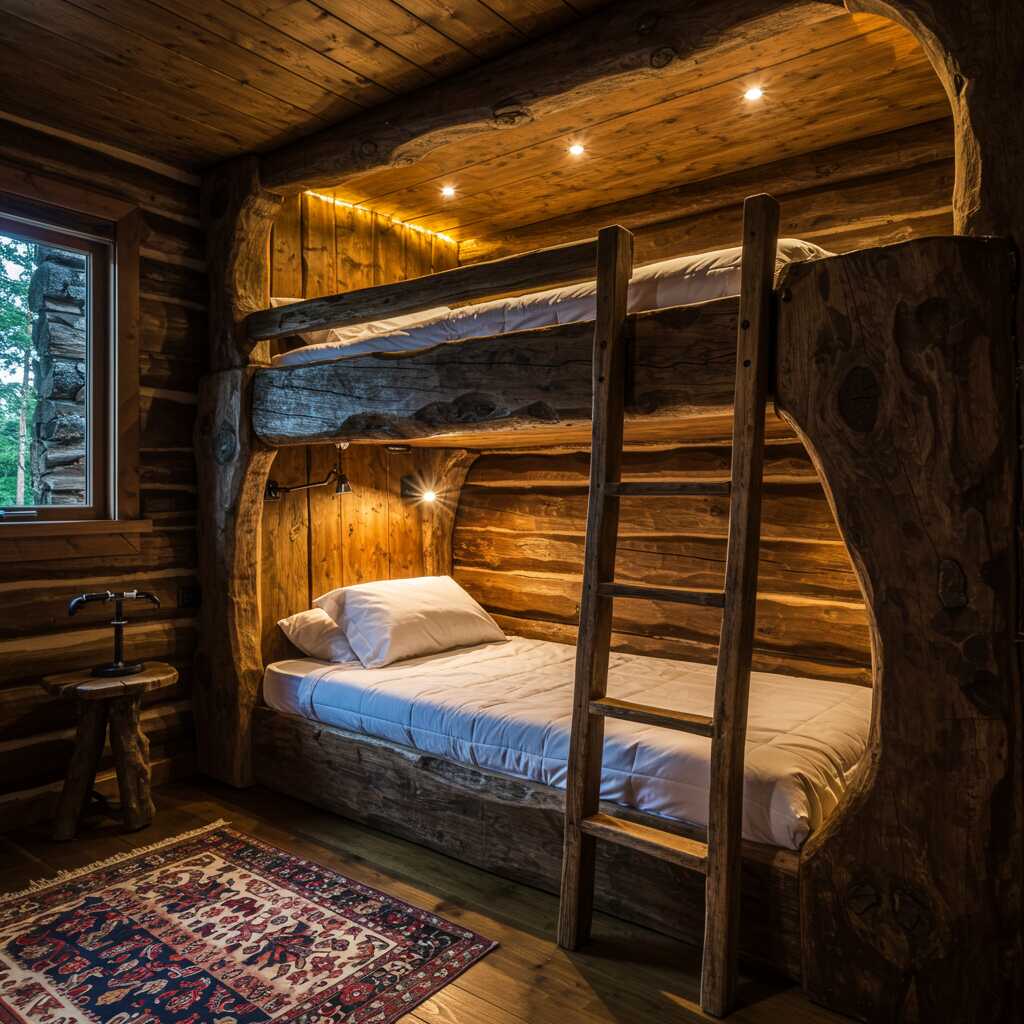
Enhancing Comfort and Safety in Your Wooden Bunk Bed Setup
Prioritizing Comfort
While maximizing space is important, it should never come at the expense of comfort. Ensuring that each sleeper enjoys a restful night’s sleep requires attention to detail when setting up your wooden bunk bed. Start by investing in high-quality mattresses that fit snugly within the bed frames. Memory foam or hybrid options are particularly popular for their ability to conform to individual body shapes, reducing pressure points and promoting better sleep quality.
For added comfort, layer the beds with plush bedding, including soft sheets, supportive pillows, and warm blankets. Consider adding mattress toppers if the standard mattress thickness feels insufficient. Additionally, pay attention to lighting around the bunk bed. Adjustable reading lamps attached to the headboard or wall sconces near each level allow users to read or relax without disturbing others.
Ensuring Safety
Safety is paramount when using a wooden bunk bed, especially in households with young children or frequent guests. Begin by securing the bed frame to the wall to prevent tipping accidents. Most manufacturers provide anchor kits for this purpose, but if yours doesn’t, consult a professional to ensure proper installation.
Next, inspect the ladder or stairs leading to the upper bunk regularly for stability. Ensure they are sturdy enough to support weight and have nonslip surfaces to minimize the risk of falls. Guardrails on all sides of the upper bunk are essential to keep occupants safe during sleep. Finally, establish clear guidelines for using the bunk bed, such as prohibiting horseplay or jumping on the beds, to reinforce responsible behavior.
Incorporating Accessibility Features
For families with diverse needs, accessibility should also be considered when setting up a wooden bunk bed. Lowering the height of the upper bunk or installing ramps instead of ladders can make the bed easier to access for individuals with mobility challenges. Similarly, choosing wide steps rather than narrow rungs can improve safety and convenience for older children or adults using the bed.
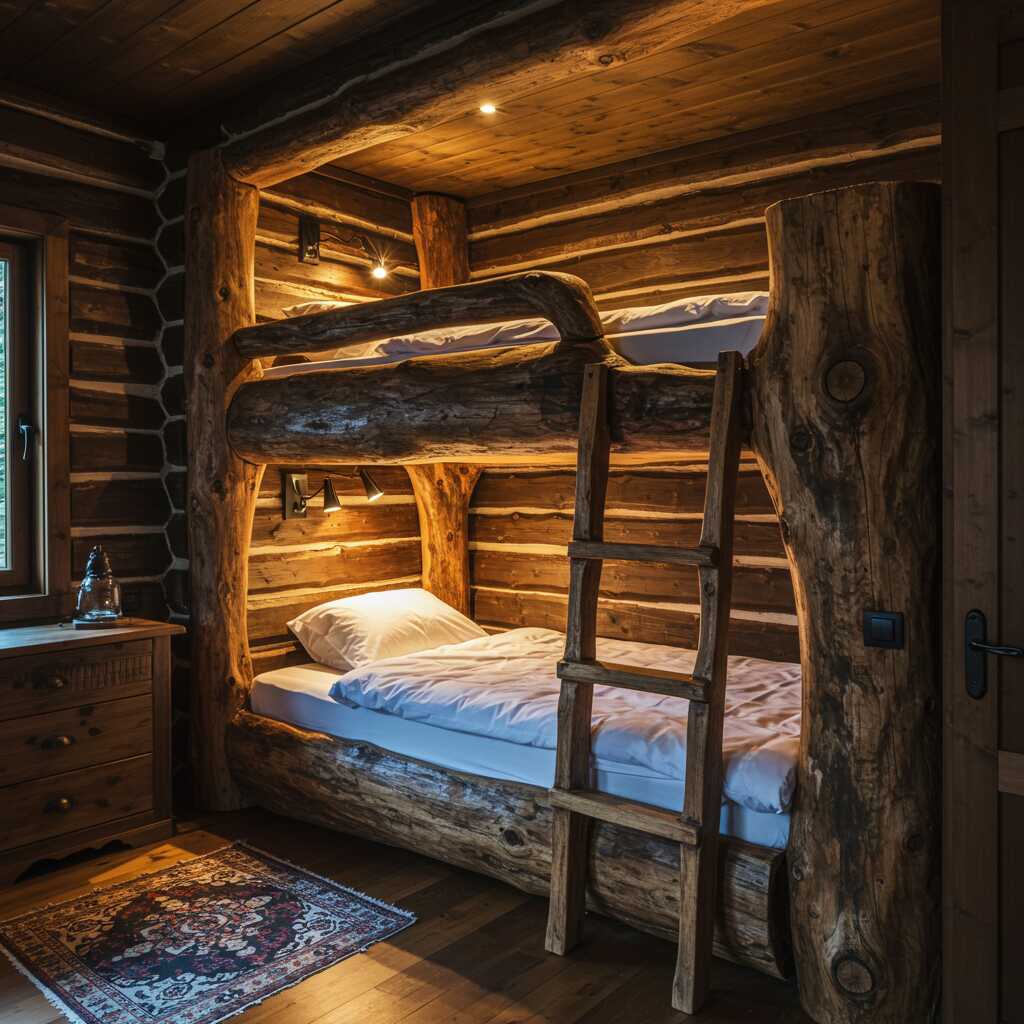
Design Considerations for Long-Term Use
Choosing the Right Layout
The placement of your wooden bunk bed plays a crucial role in how effectively you can maximize space. Before finalizing the layout, assess the dimensions of the room and identify any architectural features, such as windows, doors, or built-in closets, that might influence the arrangement. For example:
- Against a Wall: Placing the bunk bed against a wall is a classic approach that conserves floor space while maintaining easy access to both levels. This setup works particularly well in rectangular rooms where you want to leave the center area open for movement or additional furniture.
- Floating Design: If your wooden bunk bed has a loft-style configuration, consider positioning it so that the lower level remains unobstructed. This floating effect not only creates visual appeal but also allows you to utilize the space beneath more flexibly.
- Corner Placement: Corner installations are ideal for smaller rooms, as they take advantage of otherwise underutilized areas. A corner bunk bed can free up adjacent walls for shelving, desks, or wardrobes.
By carefully planning the layout, you can ensure that the wooden bunk bed integrates seamlessly into the room without feeling cramped or out of place.
Selecting the Appropriate Size
While most wooden bunk beds come in standard twin or full sizes, some manufacturers offer customizable options that cater to specific spatial constraints. For instance, if you’re working with a narrow room, a vertical bunk bed (where one bed sits directly above the other) may be preferable to an L-shaped or staggered design. Conversely, larger rooms might benefit from extended configurations, such as triple-tier bunks or combinations that include a desk or seating area.
It’s also worth considering the age and height of the users when selecting the size of the bunk bed. Younger children may find taller beds intimidating, while teenagers or adults may require more headroom and sturdier construction. By choosing a size that aligns with the occupants’ needs, you can create a comfortable and functional sleeping environment.
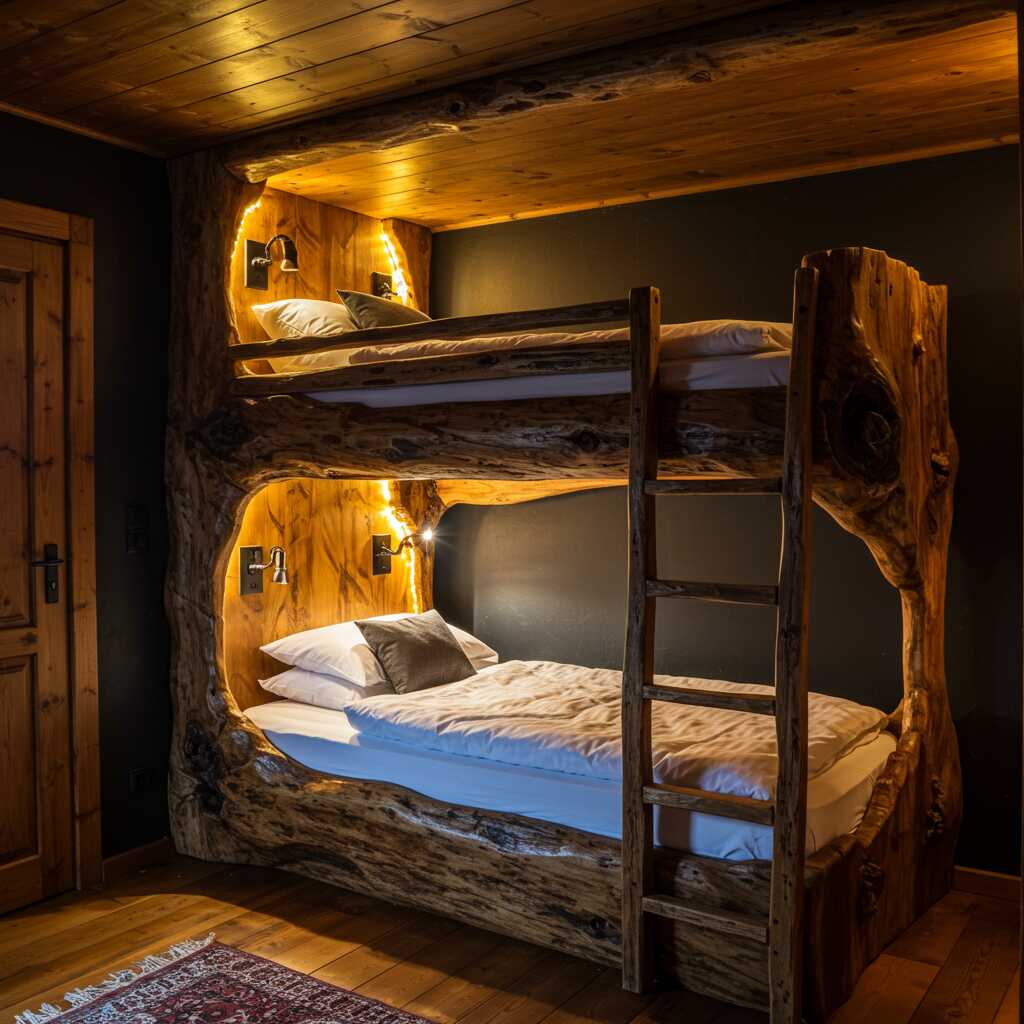
Enhancing Aesthetics with Your Wooden Bunk Bed
Blending with Existing Decor
A wooden bunk bed’s natural material lends itself beautifully to a wide range of interior styles, but achieving a cohesive look requires thoughtful coordination. Start by examining the existing color palette and textures in the room. If your decor leans toward a rustic theme, opt for a bunk bed made from reclaimed or distressed wood to enhance the earthy vibe. For modern minimalist spaces, sleek lines and lighter wood tones, such as oak or birch, can complement clean aesthetics.
You can further unify the room by incorporating matching wooden elements elsewhere—for example, picture frames, nightstands, or even flooring. Alternatively, contrast the warmth of the wood with cool-toned accents like navy blue, gray, or white to create visual interest.
Personalizing Through Accessories
Accessories are an excellent way to infuse personality into your wooden bunk bed setup. For kids’ rooms, playful curtains around the upper bunk can transform it into a cozy fort or castle. Hanging string lights or LED strips along the edges of the bed frame adds a whimsical touch while providing gentle illumination for nighttime reading.
In guest rooms or shared spaces, neutral-colored bedding paired with subtle patterns can evoke a serene atmosphere. Throw pillows, blankets, and rugs in coordinating hues tie the entire ensemble together, making the bunk bed feel like an integral part of the room rather than an afterthought.
Adding Functional Decor
When decorating around a wooden bunk bed, prioritize items that serve dual purposes. For example, instead of traditional wall art, install pegboards or magnetic boards that double as decorative displays and organizational tools. Similarly, woven baskets or fabric bins placed near the bed can store essentials like books, electronics, or toiletries while contributing to the room’s overall aesthetic.
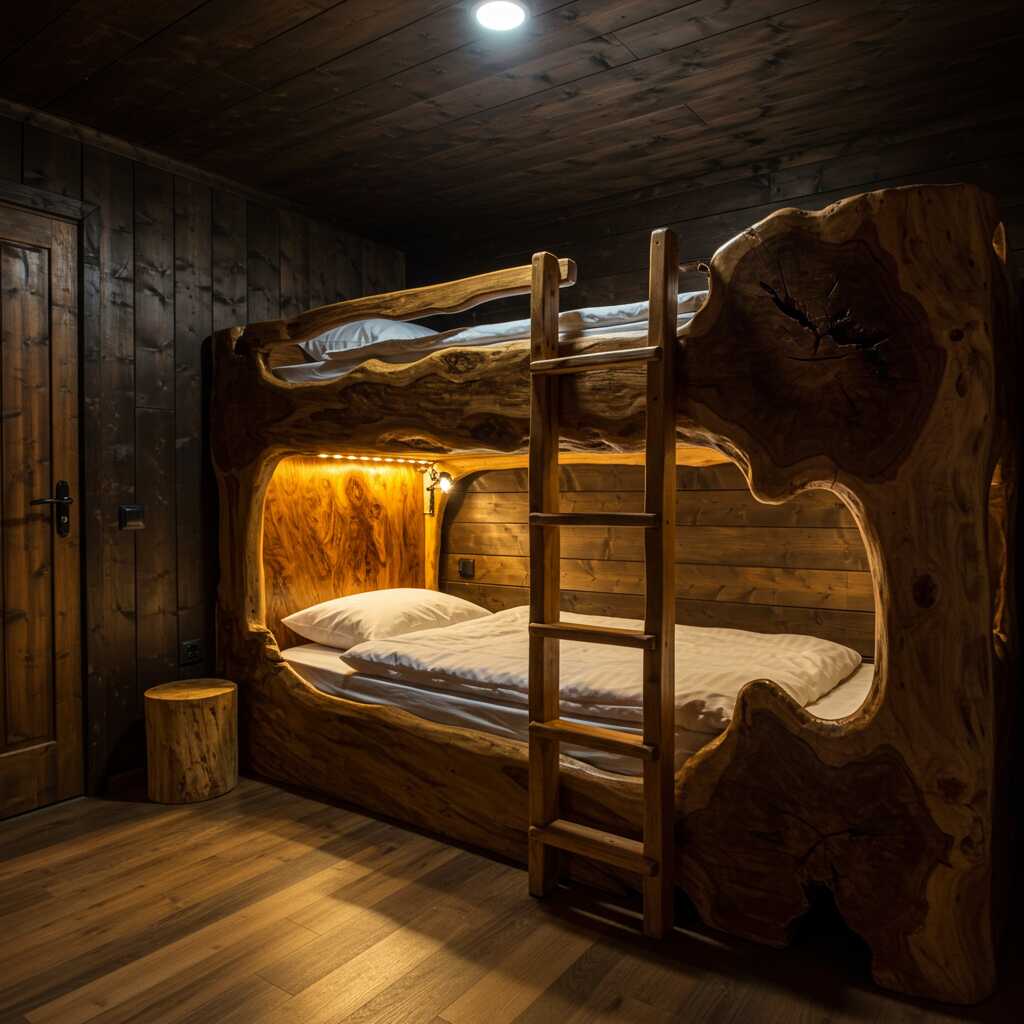
Conclusion: Making the Most of Your Wooden Bunk Bed
A wooden bunk bed is more than just a practical solution for tight spaces—it’s an opportunity to reimagine how you use your living areas. By embracing its versatility, you can create a harmonious blend of functionality, comfort, and style that enhances your home’s overall appeal. From clever storage solutions and under-bed transformations to dual-purpose furniture pairings, there are countless ways to optimize the space around your wooden bunk bed. At the same time, prioritizing safety and comfort ensures that everyone who uses it enjoys a positive experience.
Ultimately, the key to maximizing space with a wooden bunk bed lies in creativity and intentionality. By tailoring its design and usage to meet your unique needs, you can turn a simple piece of furniture into a cornerstone of your home’s layout. So whether you’re designing a playful kids’ room, a serene guest retreat, or a compact urban dwelling, let your wooden bunk bed inspire innovative ideas that elevate both form and function.

